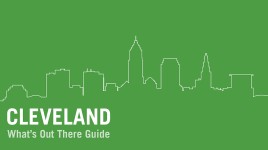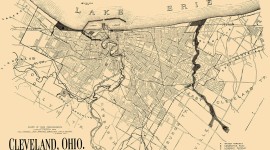This approximately eight-acre rectilinear burial ground, situated approximately half-a-mile southeast of Public Square, is considered the oldest existing cemetery in the city. The grounds were established in 1826 on the village’s outskirts. As the township expanded, the cemetery witnessed development both within and along its borders. From 1837 to 1857 an almshouse occupied the northeast portion of the cemetery and in 1867 City Market was completed a block to the southwest. In the early twentieth century the cemetery was threatened by separate proposals that aimed to appropriate the grounds as a streetcar turnaround and avenue extension, but public opposition ensured its protection.
The relatively level site is bisected by a tree lined drive connecting East Ninth and East Fourteenth Streets The allée’s deciduous and flowering trees, including maple, birch, and magnolia, shade stone mausolea and gravestones, many of which are sited just feet from the drive. The East Ninth Street entrance is framed by a sandstone, Gothic gateway, completed in 1870, that features a central arched entry. The cemetery’s graves, both marked and unmarked, are arranged in north-south oriented rows, and is dotted with specimen deciduous trees throughout. A wrought iron fence, constructed in 1870, was replaced in the 1930s with a high stone wall along the northern and southern streets, paved with brick. The extant wall affords seclusion from the surrounding neighborhood and Progressive Field stadium situated immediately southwest.
The burial ground contains several notable burials, including two indigenous leaders and individuals associated with the Underground Railroad, such as R.H Blackmer, John Malvin, and Madison Tilly. In 2017 the cemetery was listed in the National Underground Railroad Network to Freedom.
















